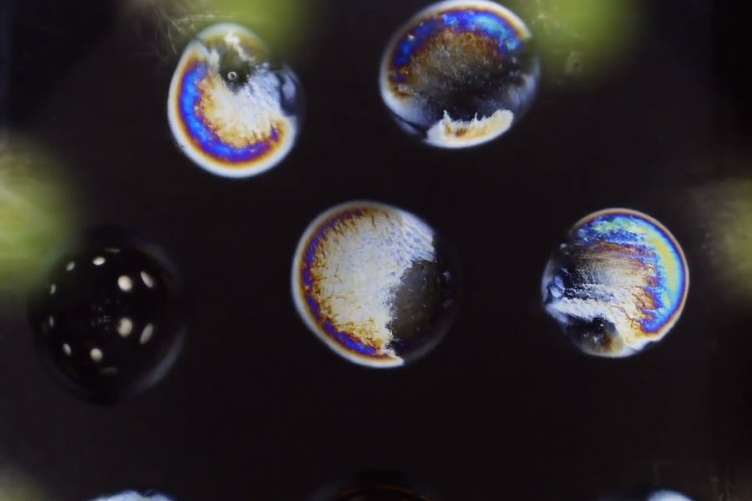
Microscope image by Mohammad Mousazadehkasin.
An optical microscope captures droplets of a potent anti-freeze polymer, cooled to -8 degrees Celsius, resisting freezing. Designed by graduate student Mohammad Mousazadehkasin and associate professor of materials science John Tsavalas, the polymer mimics the function of antifreeze proteins that help fish, insects and plants survive in subzero climates. The researchers’ goal is to develop simple and scalable approaches to anti-icing coatings or freezing and reviving transplant organs, among other uses.
“Nature, of course, designs complex and effective molecules,” says Mousazadehkasin. “Complexity is not always needed, though, and here we are happy to see the potency from our simple synthetic design match that of its biological inspiration.”
Mousazadehkasin and Tsavalas published this research, funded in part by NASA EPSCoR and the NH BioMade initiative of NH EPSCoR, in the journal Biomacromolecules.
-
Written By:
Beth Potier | UNH Marketing | beth.potier@unh.edu | 2-1566

















































